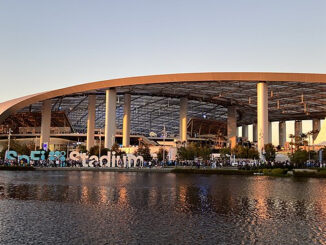Pat Higgins | Asst. Sports Editor
Sometime next week the defending Super Bowl champion Baltimore Ravens (without any sobs from Ray Lewis) will travel to Denver and face Peyton Manning and the Broncos on Thursday in a rematch of last year’s AFC Divisional Playoff game. During which the Ravens staved off elimination when Joe Flacco heaved up a 70 yard bomb and/or prayer that Jacoby Jones hauled in and/or answered, a play that enabled the Ravens to advance and defeat the Patriots and 49ers in the following rounds to win the Super Bowl in New Orleans.
So disregarding ESPN’s nonstop coverage of what Joe Flacco’s new $120 million contract will buy him (a spot at the table with Manning, Brady and Brees), extensive coverage of Tim Tebow’s ongoing struggle to throw an accurate pass and everything in between, it’s been a while since there’s been some meaningful football to watch.
The preseason is about as exciting as paint drying once the first and second stringers get their reps in the first and second quarter.
But 1 p.m. next Sunday with fans packed into stadiums and returned to their wrap around sofas in front of 90-inch flat screens may as well be one of the greatest moments of the year, behind the Fourth of July, Christmas, and Super Bowl Sunday of course. Unless you’re a Jets fan.
That’s not to say every set of eyes in America will be glued to a television to watch the glorious moment when your team runs the first play on Sunday afternoon/evening, but you can be sure a decent majority of them will be.
According to Nielsen, which publishes television ratings by identifying the ratio of television households watching a given program to the estimated total number of television households in the United States (around 114.2 million), eight of the top ten TV programs of 2012 involved the NFL Playoffs (numbers nine and ten were the Summer Olympics Opening Ceremony and the GRAMMY Awards for some perspective).
Professional football dominates popular culture in this country. According to data released by the NFL and the Nielsen Company, NFL games ranked as 31 of the top 32 most-watched television shows after Labor Day last season. Over the course of the 2012 regular season, NFL broadcasts reached over 200 million “unique” viewers and 69 percent of potential viewers in the United States. Sunday Night Football was the most watched primetime program for the fall season for the third consecutive year.
And if you didn’t get enough football on Sundays last season, Monday Night Football was the most-watched cable series on television for the seventh year in a row.
Fans are not only tuning in for broadcasts on Sundays and Monday nights, they’re also logged onto the computer, adding to their shrines of Adrian Peterson every time he rips off another 80-yard run or mimicking Victor Cruz’s salsa dance in the privacy of their own homes when a scoring update comes through. (On a sidenote, while it’s good for the game’s exponentially exploding popularity, an outplacement firm in Chicago recently released a study explaining that fantasy football is costing employers about $6.5 billion in worker productivity over the course of a 15-week season. Concerning?)
Taking into account the sport’s boom in the past two decades on top of a billion dollar business in the television and media industries, football’s return, stands for more than just a segment of viewers who watch their hometown team on CBS, FOX or NBC every week. It’s an installment in our culture that resurfaces the weekend after Labor Day each year signifying the start of fall, that unites generations from similar demographics supporting the same franchise year in and year out no matter the level of talent (there are still Lions fans after their 0-16 campaign in 2008). This unity can ignite a unique sense of excitement and anticipation in a city as its team chases after the Vince Lombardi trophy every Sunday into late January. The season comes to a screeching halt when the clock hits 0:00 on Super Bowl Sunday, but it always returns with the same aura of excitement when summer ends and the leaves begin to change every year.




